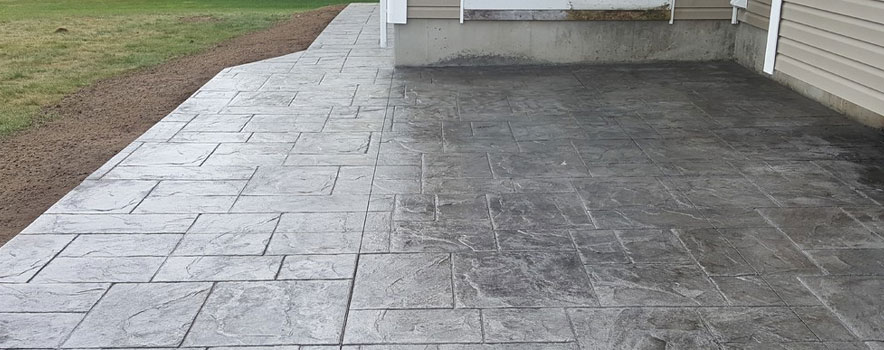
Sandstone
This texture is often seen on landscapes near rivers and other bodies of water that contain large amounts of silt and stone. The coarse grains in this texture give it the appearance of natural stone. Sandstone is a sedimentary rock that has settled through geological forces over millions of years. It is often seen as cracked or ridged and can add a rustic or old-fashioned look to any area.
Single Texture Slabs
This type of concrete can be stamped from a single piece of stone or rock. Most often seen in landscapes where the dominant landscape feature is a hillside, these single texture slabs are more susceptible to weathering and staining than other patterns. The colors and patterns may vary slightly from one slab to another, but they tend to be bright white with a neutral to earthy tone. Because of this, many home and business owners select single texture slabs for their driveways, walkways, and patios. These patterns are less expensive than alternative stamped concrete patterns.
Stamped Slate
Although most people think of stamped concrete when discussing stained or textured surfaces, these are far from the only types available. Slate can be stamped into any size, shape, and pattern. Some of the more popular types of slate include natural stone patterns, beach, tropical, and marine. Natural stone patterns are usually white to light gray in color, while the beach and tropical patterns are usually green, tan, or aqua.
Textured Stone
This is a specialized form of stamped concrete that produces a textured appearance when it is stamped. Stone textured concrete is created by applying a texture to unfinished or stamped concrete. Often the texture is a sedimentary rock like bluestone, marble, limestone, or dolomite, which is then impregnated into the concrete by means of a powder. A textured stone texture is quite hard and very durable, and thus it is often used to build monuments and other architectural structures. Other applications include exterior and foundation flooring, stamped concrete toppings, and stamped concrete borders.
Colored Stones
Like textured stone patterns, colored concrete can also be stamped into various sizes and patterns. The Colorized concrete patterns can either be a solid color or various shades of various colors. Most commonly used color varieties include black, red, brown, yellow, green, blue, indigo, purple, white, and orange.
Water Colors
This technique involves using water-based pigments on stamped or painted concrete to produce an appearance similar to stained wood or to make it look like it has been painted. The watercolor will appear opaque, as the pigment is insoluble in the cement. Different levels of water-based pigments can be used to create varying color effects. Different types of wood dye will give a different shade and texture to the pattern.
There are many more types of stamped concrete patterns, and each one will offer homeowners and business owners a wide range of textures, colors, and effects for their concrete structures. There are no limits to how you can design your concrete structures, and there are virtually endless possibilities with texture and color. The options are nearly limitless, and the possibilities are only limited by your imagination. You can use stamped concrete textures and colors to make your concrete garage floors, walkways, patios, decks, and so much more!
